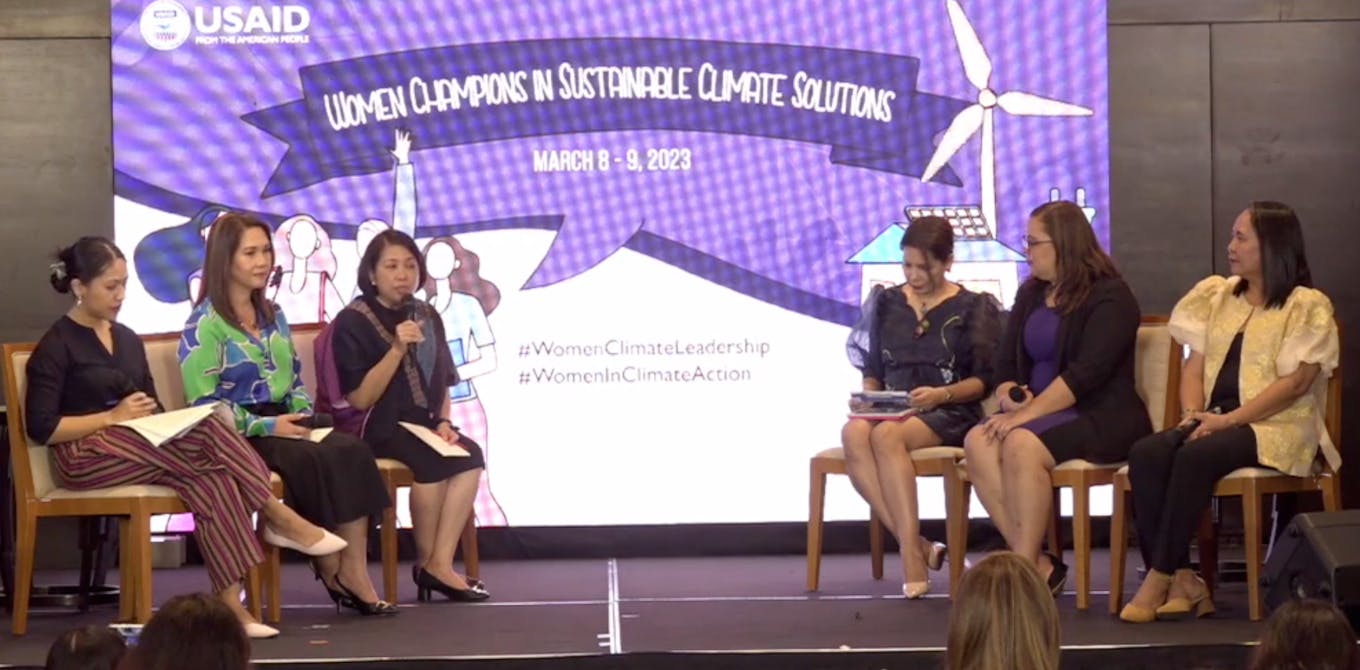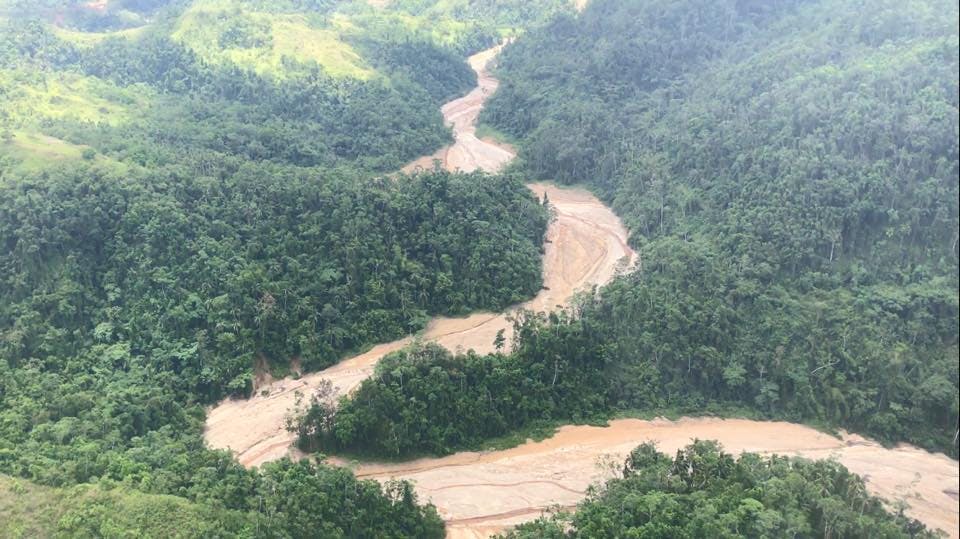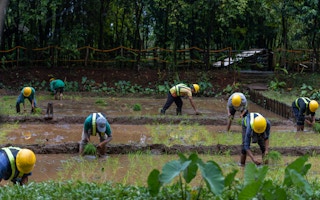Patricia Bunye, a leading lawyer in the Philippine mining industry, believes that mining in the Philippines is “vilified” in the media because the industry has not been good at communications.
To continue reading, subscribe to Eco‑Business.
There's something for everyone. We offer a range of subscription plans.
- Access our stories and receive our Insights Weekly newsletter with the free EB Member plan.
- Unlock unlimited access to our content and archive with EB Circle.
- Publish your content with EB Premium.
The experienced legal professional, highly regarded for her years of expertise in mining matters, is a member of the legal committee of the Chamber of Mines of the Philippines, an organisation active in advancing the interests of mining and mineral processing companies based in the archipelago. In the wake of fierce protests from locals of Sibuyan Island in Romblon and Brooke’s Point in Palawan, Bunye has decided to clear the air on the thorny issue of mining that she thinks is contentious mainly because of “bad press”.
Speaking with Eco-Business on the sidelines of an international women’s day celebration organised by the US Agency for International Development (USAID) on Thursday, she said: “[The mining industry] just takes all the punches and we are not able to explain the issues well. What is highlighted is all negative…The [questions] are left unanswered, or if they are answered, it is not done as well as it should be.”
While she declines to comment on the specifics of the ongoing protests against mining activities in the Philippines, Bunye cites past incidents of “media mishandling” to illustrate why the mining industry is seen in a bad light.

Lawyer Patricia Bunye (third from left) addresses the audience at a panel session held during an International Women’s Day celebration at Bonifacio Global City, Taguig, in the Philippines. “Mining has been vilified and it’s a very misunderstood industry,” she said. Image: US Agency for International Development (USAID)
One example was the Marcopper mining disaster in 1996. The incident, which involved the Marcopper Mining Corporation, a Canadian company, has been described as one of the worst mining and environmental disasters in Philippine history. A massive waste spill from the mining site had then killed marine life and displaced residents living near the site, located in the province of Marinduque.
It directly led to the government’s revision of the Philippines’ Mining Act, and the enhanced scrutiny and chatter about mining marred the reputation of the industry, Bunye said, while efforts by the mining industry to make improvements to their operations were not well-publicised.
The result is that the “sad story of Marcopper” is forever seen as synonymous to the mining industry, Bunye believes. “Everyone in the industry is Marcopper,” she said. “Unfortunately, it is the story that will stick.”
We are not able to explain the issues well. What is highlighted is all negative…The [questions] are left unanswered, or if they are answered, it is not done as well as it should be.
Patricia Bunye, mining lawyer
Bunye, who heads the mining and natural resources department and the energy practice group at the Cruz Marcelo and Tenefrancia law firm, said there are examples of mining firms that have adopted good practices. Two that she mentions are Nickel Asia Corporation, the largest producer of lateritic nickel ore in the country, and OceanaGold-owned Didipio gold mine.
Nickel Asia’s affiliate, Rio Tuba Nickel Mining Corp., has converted the remote town of Bataraza in Palawan into a community with its own hospital, school, parks, a church, and even a clubhouse for residents.The company has rehabilitated about 200 hectares of what used to be a mine site, and planted over a million surviving trees of different species on the area. More than 600 hectares of land have been reforested with native tree species.
OceanaGold’s Didipio Mine in Nueva Vizcaya has planted over two million trees and reforested a total area of about 1,3000 hectares in its mine site, according to its website. The mining company, however, also had a standoff with the local community during the pandemic.

The 1996 Marcopper mine disaster left the Boac Rver in Marinduque a “dead river”. Image: Gina Lopez PH
One rotten apple spoils the whole barrel?
Bunye tells Eco-Business that the mining industry gets a bad rap also as problems crop up with small-scale miners, which are not as strictly regulated and monitored as the larger corporations, which have to abide by mining laws, already in place.
Small-scale or artisanal mining is carried out by individuals, groups, families or cooperatives with minimal or no mechanisation. Stakeholders usually only need to get permits from local government units to run the mines, and Bunye says that this is where it is easy for them to “enter into arrangements” with the governing officials, especially when these officials change very quickly.
To carry out large-scale mining operations, corporations, on the other hand, have to provide the Mines and Geosciences Bureau (MGB) with proof of free and prior consent from the Indigenous communities, as well as undergo an environmental impact assessment and submit a rehabilitation plan for the site which will be implemented when the mine reaches its end of life.
Bunye believes there is a need for more people to understand how mining “moves the country forward”. “Mining is our competitive edge”, she said, and added that it is unfortunate that it is a very misunderstood industry.
The Philippines is the fifth most mineral-rich country in the world for gold, nickel, copper, and chromite, with untapped reserves estimated at US$1 trillion. The government regards mining as a “key driver” for economic growth, according to its finance secretary Benjamin Diokno. But anti-mining advocates have said the environmental and social impacts of mining far outweigh whatever contribution it can bring to the economy.
Last month, protesters on Sibuyan Island successfully stopped operations of Altai Mining Corp. Following that, locals of Brooke’s Point also set up a human barricade to block the operations of Ipilan Nickel Corporation (INC).
As of this writing, INC continues its operations despite non-renewal of its mayor’s permit, one of the mandatory requirements of the local government. The firm has filed a temporary restraining order against protesters, but its continuance will depend on the evidence and testimonies that will be discussed on 16 March.
The headline of this article was edited on 15 March. The original headline stated that Patricia Bunye is a representative of the Philippines’ Chamber of Mines. Bunye has clarified that she was speaking to the media in her personal capacity, and was not speaking on behalf of the organisation.
Want more Philippines ESG and sustainability news and views? Subscribe to our Eco-Business Philippines newsletter here.








